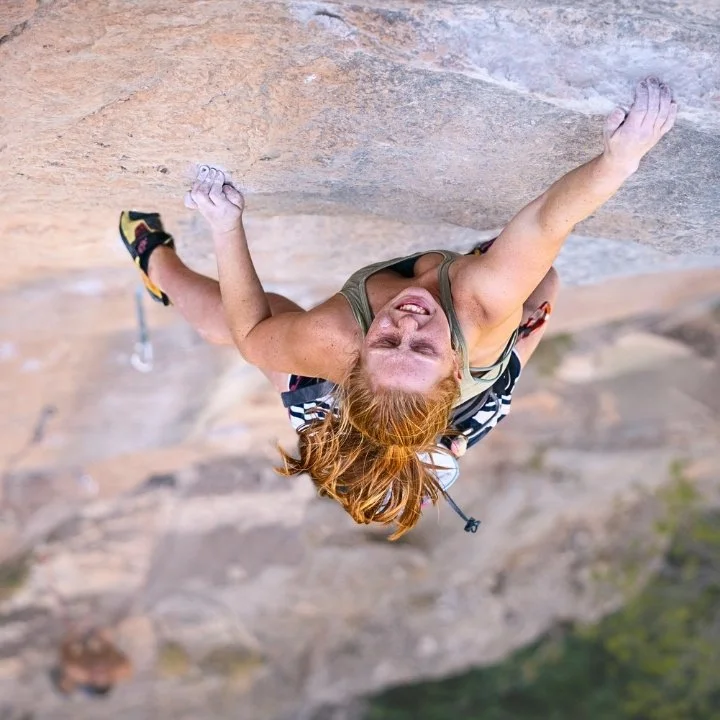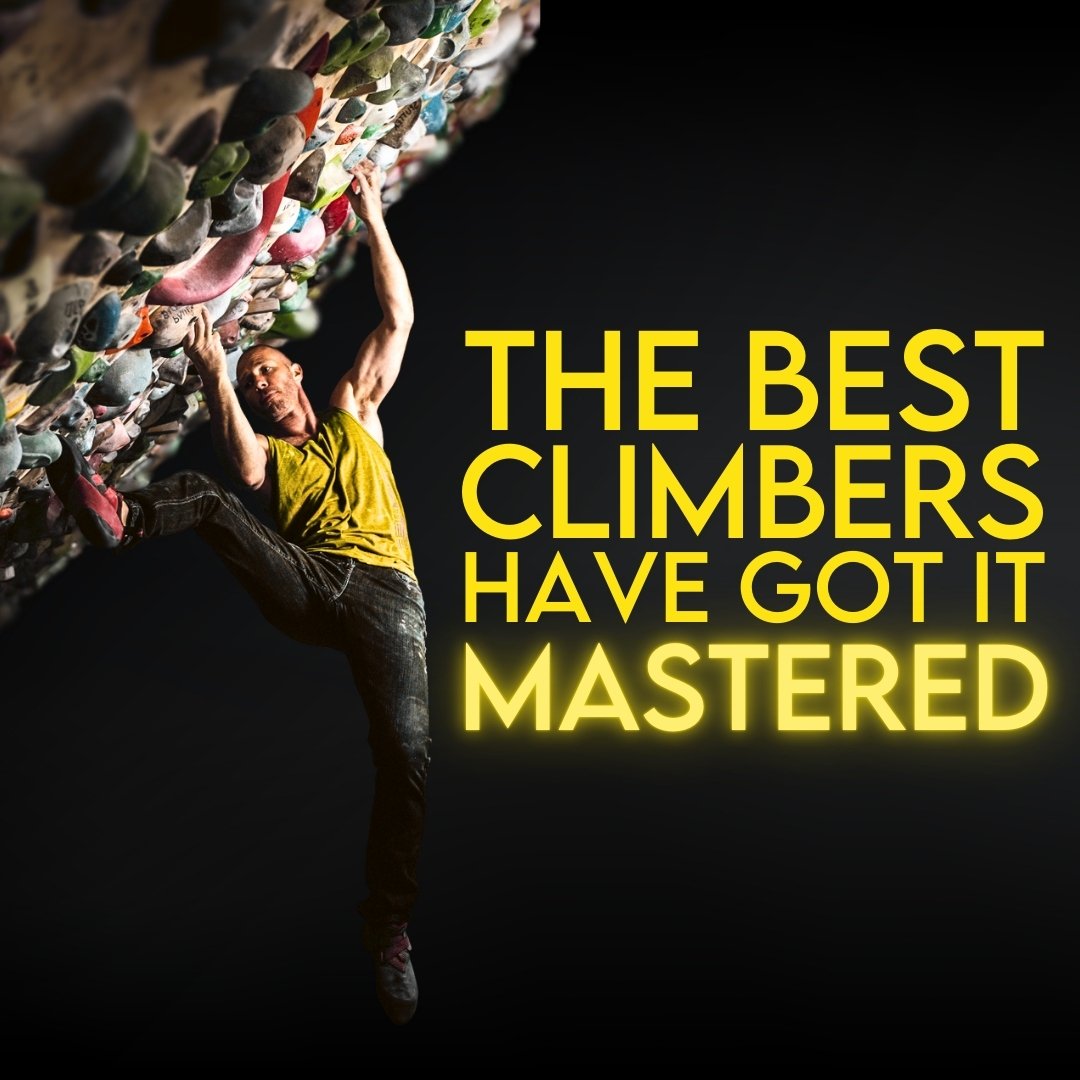The Most Important Skill for Climbing 5.13
I recently finished my 100th 5.13 sport climb and wrote a book about the lessons I learned along the way. As I was writing, something became clear to me.
There is one single skill that trumps all others when it comes to being able to climb 5.13.
Whether it’s your first or your fiftieth, a rope-stretching Red River pump-fest or a Wild Iris pocket-pulling boulder-on-a-rope. It’s not better footwork, it’s not a stronger pull-up, and it’s not more finger strength. Those things can – and often do – play a big part, but if you don’t have this one skill dialed in, those things may be rendered nearly useless.
We’re going to discuss that skill as well as how you can make sure that you’ve got what it takes.
Let’s get into it.
The book that I just released – about the experience of climbing 100 5.13’s and the decisions it required, the life changes that could have derailed it, and more – is called Adapt because I truly believe that:
Being adaptable is the most important skill any climber can have.
There are a lot of skills that come together in order for us to climb any grade, and if it’s a grade that’s challenging for you, getting all of those skills leveled up to the threshold needed isn’t going to be easy.
It’s worth saying here that climbing is always a game of compensation. There’s rarely only one way to do any move, and even on the rare occasion that there really is one set of beta, different climbers are going to bring different levels of strength, power, tenacity, belief, etc. – and they can often make up for a lack of one by compensating with another.
For instance, let’s say for climbing a specific 5.13, you feel like you need this level of finger strength, this level of power, this level of movement mastery, and this level of belief. It might be true that you need those levels, but some other climber might send with different stats. There are nearly always opportunities for compensating with some other skill or attribute. That’s part of what makes climbing so incredible – and so hard to objectively quantify.
Let me ask you this – and be honest in your answer – if you are a 5.11 or 5.12 climber who hopes to reach 5.13, or even if you’ve done a couple of 5.13’s…
How often do you give up because it feels uncomfortable?
Either because you’re pumped, because it feels too hard, because you’ve made too many mistakes, or you’ve decided you don’t have it this time? How often do you say “Take!”, or worse, take a fall when you know that you actually just let go while half-heartedly trying?
A lot of you just answered “Me? Never!” You’re lying to yourself. I’ve literally never seen a 5.12 climber who doesn’t do this. And do it regularly.
Very often, the thing separating the 5.12 climber from the 5.13 climber is the understanding that they can continue.
The confidence that they can adapt to whatever is coming, whether it’s unknown moves on an onsight, or a redpoint that is falling apart.
The climber who keeps going has a chance.
The climber who doesn’t know that they can keep going and lets go? They have zero chance of sending.
In an old Adam Ondra video, he’s talking about a flash attempt on a V14 in Fontainebleau, and he says he thought there was a 5% chance of him flashing it. He pulls on and climbs as if he has 100% chance of sending, and so he flashes the boulder.
In a conversation with legend Bill Ramsey, when he was trying to send a 14b at the age of 60, and was having hip issues that ultimately resulted in a hip replacement, and he told me that on the day he sent, he had thought he had about a 5% chance of doing so. Same as Adam. And same as Adam, he pulled on, kept going as if he had 100% chance, and sent.
How low does the probability that you will send need to drop before you let go?
I’ve seen some of you drop off while still in 90% chance territory. A lot of people drop at 75%, and the field is really slim by 50%.
Those who are still left at 5% – the ones who can keep going when it just doesn’t seem realistic? Those are the ones sending more often.
They have the best chance of becoming better climbers. And more often than not, they all have one aspect of their preparation in common: they’ve put themselves in that position over and over and over at every grade of their climbing journey, and they have an intimate understanding that they don’t actually know where their limit is. They don’t know when they might make it and when they might fall off. They’ve surprised themselves enough times to know better than to predict success or failure. If it’s a redpoint attempt, there is no “Take,” there is no “just let go,” no matter how uncomfortable it gets or unlikely it seems. They know that they are adaptable enough to handle what’s coming.
A 5% chance is enough to climb like there is a 100% chance.
And this doesn’t only apply to the “on route” scenarios.
Better climbers also have a deeper understanding that they can continue in their process, even in the face of setbacks.
Many 5.12 climbers will bail on a potential project if they don’t do all of the moves on the first or second try. Better climbers understand that a move can go from feeling impossible to being dialed just by finding a subtle body position shift, and so they are more likely to continue as if they know they are going to get it done.
Now, if you know you’re somebody who cops out sometimes and lets go, or says “Take,” or switches to a new project every time there’s a setback – there’s good news. Once you start to lean into this skill, it becomes a lot of fun and you’ll do more rock climbs.
In the back of the new book is a table showing the number of unique redpoints I did each year. The same year I did my first 5.13, I also did 62 5.12’s and 85 5.11’s. The next year I did nine 13a’s, two 13b’s, and my 5.12 count only dropped by one to 61. Keep in mind, this was all as a dad working a 50+ hour/week job – I was strictly a weekend warrior, averaging fewer than 45 days a year outside.
The key is that I was trying to get things done fast.
Onsight or within a couple of goes. Often times before I had the moves dialed in. So the ascents were scrappy but I got better at adapting to a lot of different scenarios: a variety of terrain and styles, levels of fatigue and pump, mistakes and being drained mentally. Occasionally I’d be surprised by some strange crux on a grade I knew I could do, and I’d stick with it because my track record let me know that I could sort it out. Because of that, even though I didn’t do all of the moves on my first time up the route, I did my first 5.13 in only five tries. By the next season, I did a couple of 13a’s on my second try.
I’m not saying that you can’t climb 5.13 if you don’t do a huge volume of 5.11 and 5.12 first. It’s entirely possible that if you meet the threshold for enough attributes you can then compensate with repeated attempts, and send. Going that route usually means you’re going to have to take that same path and number of attempts for the next of the grade as well.
But if you put that time in on the front end, putting yourself into a wider variety of challenges, you’ll get better at adapting.
And when you do come up short on some specific threshold, the easier it will be to pull up some other attribute that you can compensate with. That means you’re likely to send faster, which means you can do more of that grade in a shorter period of time, which means you’ll improve your adaptation skills at that higher level. It becomes a self-perpetuating positive feedback loop that can get you far closer to the upper limits of your potential than simply always mega-projecting the next grade.
And don’t get me wrong, there’s nothing wrong with mega-projecting. As you get closer to that upper limit, it’s something you’ll likely have to do. My advice is just don’t jump into it too early in your climbing career.
Give yourself a chance to become more adaptable first, and even though it feels like the long way around, you’ll find that it’s a shortcut.
EXPLORE FURTHER
You might enjoy these related articles, episodes, and other resources:
Adapt: Lessons Learned Climbing 100 5.13’s
Climb Your Project Sooner | The Art of Execution
Taped Tips | The Secret to Hard Moves that Most Climbers Are Missing
SUPPORT + CONNECT
Help us keep the show sponsor-free when you join our Patreon Community for as little as $3.
Get two or more bonus episodes every month on Patreon, Spotify, or Apple.
Subscribe to THE CURRENT and get a monthly exploration of how we can all become better climbers.



















Alex Megos once said that conditions don’t matter, but we all know that’s not true… or is it?